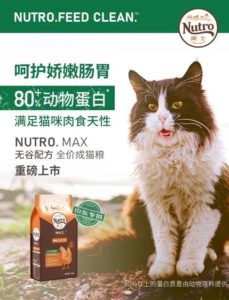Feb 2, 2021|
JD C2M: Supply Chain’s Journey from Mass Market to Niche Market
by Ella Kidron
A fridge with sterilization, anti-odor and separation of dry and wet storage. A drill set perfect for at home DIY hardware projects. A gaming laptop with the monitor-screen ratio, resolution and refresh rate optimized for the most hardcore of gamers. A cat food with a high percentage of meat, high crude protein and that pays attention to cats’ gastrointestinal management.
What do these seemingly radically different products have in common? They were all developed through JD’s Consumer-to-Manufacturer (C2M) initiative. And, at the heart of this initiative? The ability to detect the trends, and turn the trends into products that consumers race to buy. In other words, the ability to influence the entire supply chain, from design to end consumption.
There are countless definitions and ways of positioning C2M, and this comes as no surprise as it has become an e-commerce buzzword in China in the last few years. According to Hu Hao, head of supply chain innovation at JD.com, the majority of people understand C2M as reverse customization based on the mining of user insights.
Hu, however, sees it going deeper than that, all leading back to the supply chain. “In fact, from a supply chain perspective, C2M is more about how the insight into user demands, as well as the resources and capabilities of the whole supply chain, form an insight into new trends, new demands, new markets and new product opportunities, and about how to effectively integrate supply chain resources in order to preempt or rapidly respond to these changes in demand in order to improve overall supply chain efficiency.”

JD’s Hu Hao
When the C2M supply chain works as it should, consumers get the benefits of better products without even feeling it. According to JD data, only 12% of consumers know what C2M is, but it doesn’t matter because it turns out that nearly 90% of consumers are satisfied or highly satisfied with C2M products.
This is good news for brands and manufacturers, who can spend much less time on guesswork of how a product is going to land and can also be much more agile to changes. Ashely Dudarenok, Founder of Alarice and ChoZan, a consulting firm, explained: “One of the most-quoted stats from [the late] Harvard Business School professor Clayton Christensen said there are over 30,000 new products introduced every year…unfortunately 95% of them end up failing. With the C2M model, brands can improve their earnings by shortening the lead time and costs of product research and development.”

Ashley Dudarenok, Founder of Alarice and ChoZan
From idea to marketable product
According to market research firm iResearch, the C2M model generated an estimated $2.5 billion in sales in 2018, and is expected to generate $5.9 billion by 2022, more than doubling in the course of five years. One of the main reasons for this is the model’s ability to increase customer satisfaction. Dudarenok said: “As for consumers, the C2M model provides more sophisticated products that are tailored to better solve their pain points…For instance, the 3 best-selling products under the small home appliances category on JD during [Singles Day] last year were all C2M products exclusively offered on JD. More than 50 C2M products achieved sales of over RMB 100 million each on JD last year.”
JD’s advantage in C2M lies not only in accumulated insights from years of observing consumer behavior, but also in its ability to combine this with its legacy strength as a retailer – close proximity to the customer, strong relationships with suppliers and manufacturers, and an ability to respond rapidly to changes in demand. The company can quickly capture changes in demand at the consumer end and relay them to the manufacturing end. The C2M as a whole is highly in line with JD’s strategic positioning as a digital intelligent supply chain leader.
The JD C2M model includes several key steps.
1. Insight Report: Produce a detailed report outlining demand for products leveraging JD’s extensive consumption data and industry insights. This can result in guidance for brands on anything from size of a product, flavor or color, way to package it, and more
2. Online Simulation: Create a simulation of the actual purchasing process and observe consumer behavior such as clicks, browsing duration, and the rate at which products are added to the cart
3. R&D Manufacturing: Development of the product based on demand
4. Product Launch & Precision Marketing: Including support in marketing the product to the right customers. The C2M model is seen to help shorten market research time by 75% compared with traditional offline means and shorten the new product launch cycle by 67%.
Once the product is on the shelves, JD is able to ensure availability and secure delivery to customers. “JD’s impeccable logistics network also allows for smarter and cost-effective logistics and inventory management,” said Dudarenok.
C2M in practice
So, what types of products and categories are ripe for C2M? “The core of C2M is user mindset,” said Hu. “It is centered on user demand. When looking at whether a [product or category] is suitable for C2M, the judgment needs to return to user demand. Categories where demand, popularity and trends change quickly, demand is heavily segmented, individualized and differentiated are ripe for C2M.” The demand fluctuation of such products is large, and the supply chain “bullwhip effect” is apparent.
The bullwhip effect refers to the supply chain phenomenon describing how small fluctuations in demand at the retail level can cause progressively larger fluctuations at the wholesale level. It gets its name from the physics involved in cracking a whip. With the bullwhip effect, each participant in the supply chain influences the entire chain with their forecasting inaccuracies, so any change in one area can have a profound impact on others. “Having insight into user demand in advance through C2M can be effective in reducing the supply chain bullwhip effect and optimizing costs in the entire supply chain,” said Hu.
Several examples from JD’s business illustrate this. In one case, JD worked with leading home appliances brand Midea to design a custom fridge. Through an in-depth analysis of consumer data, JD realized that consumers’ heightened awareness of food safety was influencing their post-COVID-19 outbreak shopping behaviors. This is especially the case for families with children. Looking at consumer search behavior, JD was able to see that in addition to basic functions to retain freshness, other priority functions included sterilization, microcrystalline (believed to help preserve meat and other food items), anti-odor, separation of dry and wet storage and more. The company recommended that Midea create a fridge focused on health-conscious functions such as sterilization capabilities as the main selling points. When the fridge series finally came to market during the 2020 618 Grand Promotion (June 1st-18th), daily average sales were up four times YOY.
In another example, JD helped U.S. food giant Mars launch high-end cat food through C2M under its Nutro brand. The e-commerce company was able to hone in on granular product characteristics such as “high percentage of meat”, “high crude protein”, “pay attention to cats’ gastrointestinal management” and “no grain and natural.” With this information, Nutro selected fresh chicken meat, and the product consists of over 80% animal protein, and is grain free, ensuring no burden on cats’ digestive systems.”

Nutro Max C2M cat food
C2M: From China to “the World”
C2M has largely been talked about as a China phenomenon, but that doesn’t mean it is restricted to the China market. The secret to the globalization of C2M? Accumulated understanding of local consumer insights and the ability to drive the global supply chain to quickly respond to changes in demand.
Hu explains that the core of the C2M model involves, one: Big data, AI technology and C2M platform ability, and two: Supply chain data and scenario accumulation. “The mature use of AI and technology and platform ability in China’s domestic market can be used to serve many countries and regions, but creating a product that is suitable to each country’s individual consumers depends on international supply chain data and a steady accumulation of scenario data,” he said.
According to Dudarenok, with the increasing sophistication of consumers, reverse customization is “somewhat inevitable.” She added: “Product manufacturing needs to evolve from the traditional approach of an R&D-driven process to a consumer-driven process.”
The new “super e-commerce trend”
But even with the promise of C2M, the value of the model is not always adequately understood. Dudarenok added: “The biggest misunderstanding is that most people fixate too much on getting ‘lower prices’ when it comes to C2M products. The primary purpose of C2M should be more on leveraging big data analytics and evolving traditional manufacturing from an R&D and marketing-driven process into a consumer-driven process, rather than simply offering dirt-cheap deals to consumers. Competitive pricing is still important, but should not be the sole focus, i.e. how suppliers get that balance between low price and quality is also important.”
In a sense, C2M is still in early stages of development. Hu believes it will bring huge changes to the industrial and retail supply chains. “In the future, JD will strengthen its investment in supply chain big data and AI technology to enhance the quality of demand insights. We will also combine the experience of category experts with AI to proliferate industry ‘know how’ throughout the industry,” said Hu. JD will continue to improve its own C2M capabilities, and expand its reach upstream and downstream to improve the efficiency of the supply chain for all.
Like JD, Dudarenok is optimistic about C2M’s road ahead. “The C2M model will only become better and more mature, and it may even become a super e-commerce trend like livestreaming today,” she said.





 This Harbin tourism boom has also spurred a surge in sales of winter apparel. JD.com’s data indicates a rapid growth in the sales of warm clothing items such as down jackets, snow boots, and thermal underwear between January 1st and 7th. The sales growth is especially pronounced in southern provinces and cities such as Jiangsu, Zhejiang, Guangdong, Sichuan, and Shanghai. Notably, tall snow boots registered a 206% year-on-year increase in transactions, while padded cotton caps and thickened long down jackets soared by 158% and 134%, respectively. Beyond clothing, travel gear has also seen a considerable uptick, with a 98% year-on-year growth in transactions for large suitcases and travel backpacks in these southern regions.
This Harbin tourism boom has also spurred a surge in sales of winter apparel. JD.com’s data indicates a rapid growth in the sales of warm clothing items such as down jackets, snow boots, and thermal underwear between January 1st and 7th. The sales growth is especially pronounced in southern provinces and cities such as Jiangsu, Zhejiang, Guangdong, Sichuan, and Shanghai. Notably, tall snow boots registered a 206% year-on-year increase in transactions, while padded cotton caps and thickened long down jackets soared by 158% and 134%, respectively. Beyond clothing, travel gear has also seen a considerable uptick, with a 98% year-on-year growth in transactions for large suitcases and travel backpacks in these southern regions. JD.com Ranked on FORTUNE 2021 World’s Most Admired Companies List
JD.com Ranked on FORTUNE 2021 World’s Most Admired Companies List



